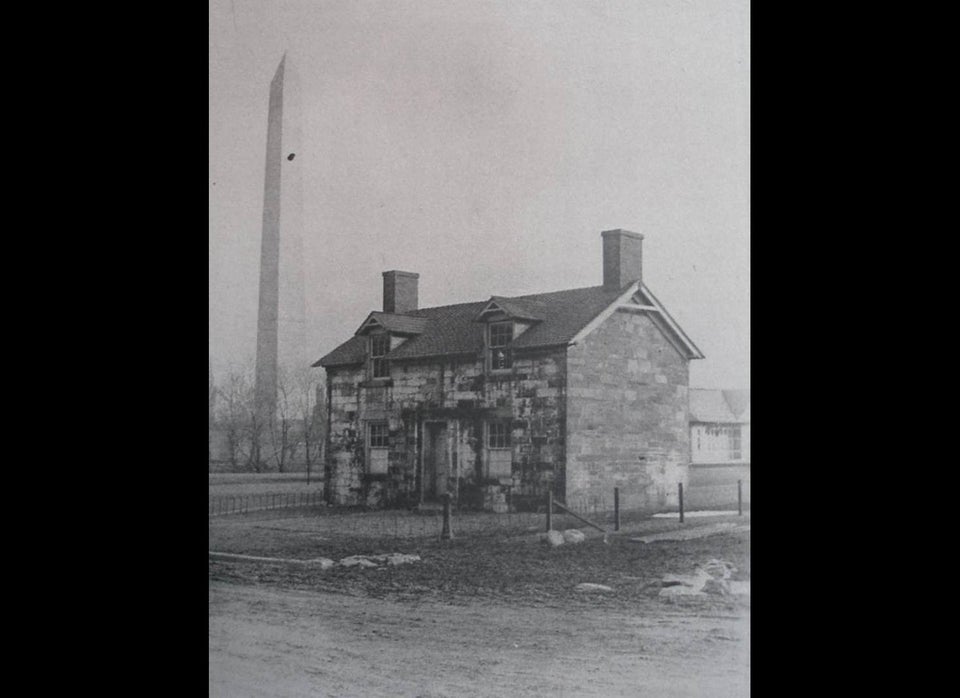Every year, millions of people pass by a nondescript stone building situated on the northwest side of the National Mall, just inches from the bustling and dangerous intersection of Constitution Avenue and 17th Street. The few who happen to notice it wonder why this dilapidated structure, with peeling paint and boarded and barred windows, is standing there at all.
The Lockkeeper's House, as it's called, is in fact the oldest structure on the Mall. It is this centuries-old building that will help further highlight the new era of public-private partnerships, serving as the cornerstone of an ambitious project to renew and revitalize the National Mall.
Built in 1835, this overlooked historic building once served as home and office to the man charged with collecting tolls, keeping trade records and operating the lock where the C&O Canal met the Washington City Canal.
Believe it or not, the Washington City Canal carried goods and livestock right through the heart of D.C. through the early 1880s. Starting at the Anacostia River, it ran around the U.S. Capitol, then westward along what is now Constitution Ave., where it connected to the Washington Branch extension of the C&O Canal, at what is now 17th Street.
For nearly 40 years, the lockkeeper stood watch over this watery intersection, until rail and other means of travel rendered the canal little more than an open sewer. By 1872, Congress decided it was best to fill the canals in, with the C&O portion becoming part of a reclamation project that filled in the Potomac River out to where the Lincoln Memorial now stands.
As a result, there is nothing left to mark this unique period in our capital's history - except the Lockkeeper's House.
Unfortunately, time and lack of resources have been unkind to this historically rich building. Over the years, it's been used as a tool shed for the Army Corps of Engineers, a storage facility for the National Park Service and a public restroom. The inside, closed to the public for the past 40 years, is in even worse shape than the outside.
Thankfully, the Lockkeeper's House is about to be transformed and re-opened, thanks to a public-private partnership that is repairing and renewing the entire National Mall.
Like the house, time hasn't been kind to the National Mall, either. Years of heavy tourist traffic - 29 million every year - and delayed repairs have resulted in fields of dead grass, a fetid pond and cracked sidewalks that do not represent the American ideals, freedoms and values our National Mall was built to represent. It looks as if we lost pride in our most sacred symbols.
Working as the National Park Service's official nonprofit partner, the privately funded Trust for the National Mall embarked in 2007 on a long-term campaign to restore, improve and preserve the National Mall. The Trust and the National Park Service were proud to showcase their partnership earlier this year, when they together reopened the earthquake-damaged Washington Monument.
And today, the Trust is working with a grant from American Express as well as other private donations to move the Lockkeeper's House safely away from the intersection it now borders and completely refurbish it top to bottom, turning the house into a much-needed educational space on the Mall. As an added benefit, the restorations will include the latest sustainability technologies and materials.
Once it's done, the Lockkeeper's House will serve as a gateway to Constitution Gardens, the 38-acre space on the Mall which sits just north of the reflecting pool and connects the World War II and Vietnam Veterans memorials. This area will at the same time be undergoing a major transformation as the Trust's first priority project.
In the end, both the Lockkeeper's House and Constitution Gardens will serve as a shining example not just of the country's rich history and its founding principles, but as a living example of the promise of public-private partnerships to address needed projects quickly and efficiently.
Nothing could be more American than that.
<
>
